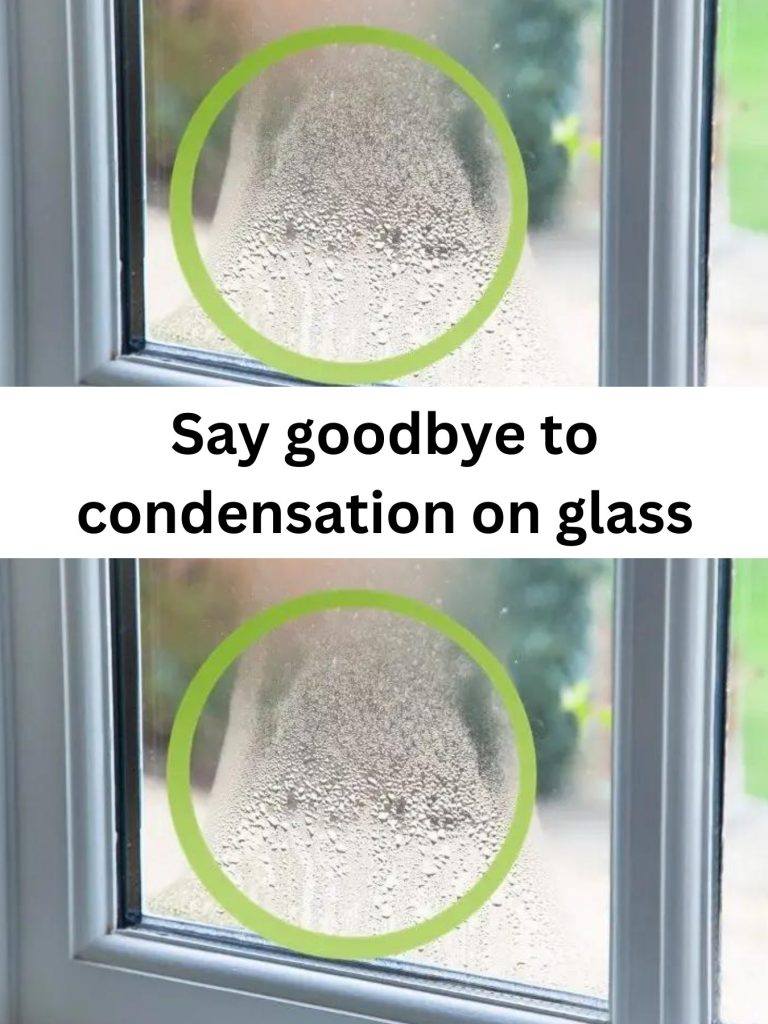ADVERTISEMENT
Say Goodbye to Condensation on Glass and Windows with These Tricks!
Condensation on glass surfaces, especially windows, can be a frustrating and persistent issue, especially during colder months when the warm air inside your home meets the chilly glass. Not only does it obscure your view, but it can also lead to dampness, mold growth, and damage to your window frames. Luckily, you don’t need to resort to harsh chemicals or expensive solutions to fix this common problem. There are simple, natural, and effective tricks you can try to keep your windows clear and dry all year round.
In this article, we’ll explore some easy-to-implement methods to eliminate condensation on glass and windows. Whether you’re dealing with misty bathroom mirrors, steamed-up windows, or excessive moisture buildup, these tricks will help you say goodbye to foggy windows for good.
Why Does Condensation Happen?
Before we dive into the solutions, it’s important to understand why condensation occurs in the first place. Condensation forms when warm, moist air meets a cool surface—like a window—causing the moisture in the air to turn into liquid droplets on the glass. This typically happens during the colder months when the indoor air is warmer and more humid, and the glass is cooler due to outdoor temperatures.
While condensation is a natural process, it can be problematic if it happens too often or in excess. It’s not just unsightly; it can lead to:
- Mold and mildew growth on window frames and sills.
- Water damage to walls, frames, and surrounding areas.
- Increased humidity inside your home, which can make it uncomfortable.
Now, let’s explore several practical tricks that will help you keep condensation at bay.
1. Use a Dehumidifier
One of the easiest and most effective ways to reduce condensation in your home is by lowering the humidity. A dehumidifier draws excess moisture from the air, helping to maintain an optimal level of humidity.
How to Use a Dehumidifier:
- Place a dehumidifier in rooms where condensation is a frequent problem, such as the bathroom, kitchen, or basement.
- Aim for an indoor humidity level of around 30-50% for optimal comfort and to minimize condensation.
- Make sure to empty the dehumidifier’s water tank regularly to keep it running efficiently.
By using a dehumidifier, you’ll notice a significant reduction in moisture buildup on your windows, and you’ll help prevent mold and mildew growth.
2. Improve Ventilation
Proper ventilation is key to reducing indoor humidity and preventing condensation on windows. Without sufficient airflow, moisture builds up inside, leading to foggy windows. Opening windows or using fans can help circulate air and prevent excess moisture from settling on cold surfaces.
How to Improve Ventilation:
- Open windows when cooking or showering to allow moisture to escape and fresh air to circulate.
- Use exhaust fans in the bathroom and kitchen to remove steam and humidity.
- Keep air vents clear and make sure that heating systems are circulating air effectively throughout the home.
In addition, when it’s safe to do so, open windows for a few minutes each day, even in the colder months. This small action helps exchange indoor air with fresh outdoor air and reduces the humidity that leads to condensation.
3. Apply Anti-Condensation Window Film
For a more long-term solution, anti-condensation window film can be applied directly to the glass. This film helps insulate the window and reduces the temperature difference between the glass and the surrounding air, preventing condensation from forming in the first place.
How to Use Anti-Condensation Film:
- Measure your windows and purchase the right size of anti-condensation window film.
- Clean the window thoroughly before applying the film, ensuring no dust or debris is left behind.
- Follow the manufacturer’s instructions for applying the film. It typically involves peeling off a backing and pressing the film against the glass to create a tight seal.
- After installation, this film will help to keep the glass warmer and more resistant to condensation buildup.
This is a particularly useful solution for areas with persistent condensation, such as bedrooms or basements.
4. Insulate Your Windows
Another way to tackle condensation is by insulating your windows. Well-insulated windows are less prone to temperature differences between the inside and outside, which helps prevent condensation. If you have older windows or single-pane windows, upgrading to double-glazed or insulated windows will significantly reduce condensation and improve your home’s energy efficiency.
How to Insulate Your Windows:
- Weatherstripping: Add weatherstripping around window frames to create a tight seal and prevent cold air from entering. This helps keep the inside air warmer and reduces the chance of condensation forming on the glass.
- Window Insulation Kits: These kits typically come with plastic film that you can apply to the window. The film traps a layer of air between the window and the film, providing extra insulation.
- Double Glazing: If you’re looking for a permanent solution, consider installing double-glazed windows. They are designed to provide superior insulation, reducing the temperature difference between the inside and outside.
Investing in good window insulation can save you money on energy bills, prevent condensation, and improve your home’s comfort.
For Complete Cooking STEPS Please Head On Over To Next Page Or Open button (>) and don’t forget to SHARE with your Facebook friends
